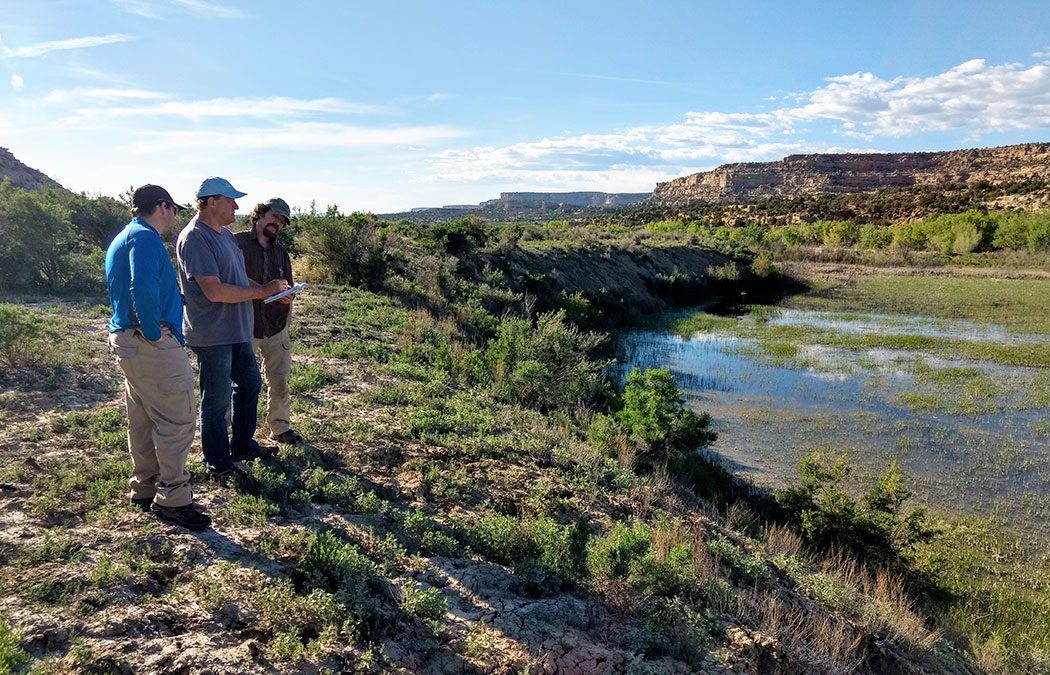Since faculty and staff started working remotely and students began distance learning due to the COVID-19 pandemic, the GeoSpatial Services (GSS) program has remained strong and continued work on federal projects. This was partly possible due to the students and staff who have been employed to work in GSS operations during this time.
More than 25 undergraduate students were transitioned to GSS, including several international students who were not able to return home. Many of these students relied on financial support from work-study that they were no longer able to complete, but GSS work filled this need, helping Saint Mary’s retention rate. More than 20 students will also be traveling back to Winona this summer to continue the work while staying in individual accommodations and following safety guidelines.
Additionally, eight Saint Mary’s staff, many who may have otherwise lost their jobs, have been redeployed to support GSS projects. This has strengthened the Saint Mary’s community and provided job security to additional families.
“GSS has numerous ongoing projects for both government and non-governmental partners, and the loss of our student workers could have been significant,” said Andy Robertson, GSS director. “Being able to quickly transition to a full work-at-home model for both students and staff has allowed us to keep project budgets and timelines intact while continuing to provide experiential learning for students, employment continuity, and some measure of financial stability in uncertain times.”
All GSS team members were initially sent home with computers, some as far away as Oregon and Illinois. At the same time, several socially distanced spaces were created in Winona and the Twin Cities so students and staff could return to work immediately after the stay-at-home restrictions were relaxed.
“Creating safe, sanitized, and socially distanced environments for returning to work has enabled us to offer additional employment opportunities and keep students in Winona throughout the summer,” said Robertson.
Through ongoing partnerships and marketing, GSS has also been able to secure an additional $2 million worth of project funding since the pandemic began. And they expect that to increase significantly as they near the end of the federal fiscal year.
GSS is a project center within Saint Mary’s that integrates professional services and academic apprenticeships in the areas of natural resource assessment, geographic analysis, and contemporary mapping. This integration employs the technical and problem-solving skills of full-time staff and fosters practical work experience for our students. GSS is devoted to meeting the needs of their partners with services including program development, data design and application, and data visualization.
“One of the most exciting projects GSS has managed to continue despite the pandemic involves the preparation and analysis of maps that support a legal injunction being filed by 32 states against the Trump Administration’s re-interpretation of the Clean Water Act,” Robertson said. “Data created by students and staff at GSS and communication tools developed specifically for this case are being submitted as expert testimony in a trial set to begin on June 18 in the United States District Court for Northern California. This work has placed GSS and Saint Mary’s University of Minnesota at the forefront of one of the most significant environmental issues of the current day, namely how do we manage impacts to the nation’s water resources so as to ensure a clean, safe, stable water supply for current and future generations.”
Find more information at geospatialservices.org.
Photo caption: GSS undergraduate student worker and staff person map wetlands in New Mexico as part of an ongoing project for the state Environment Department in October 2018.
